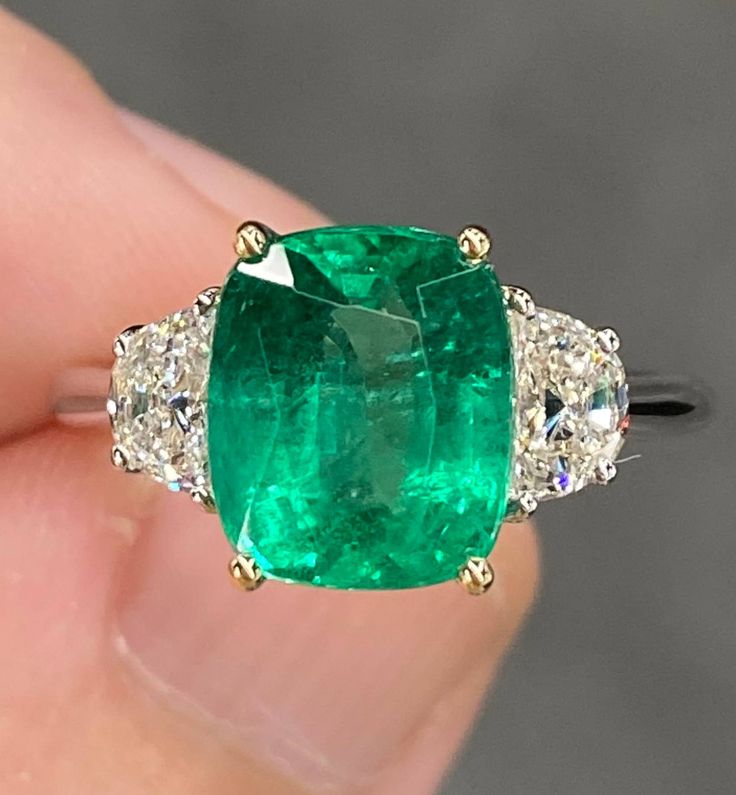How long does it take for an emerald to form in nature?
Emeralds, one of the most prized gemstones in the world, have captured the imagination of mankind for millennia. Their intense green color and rare beauty make them highly sought-after gems. However, the creation of these gems in nature is an extraordinarily slow and complex process.
In this article, we'll explore how emeralds are formed, their distinctive characteristics, and find out how long it actually takes for nature to forge one of these prized stones.
How is an emerald formed?
Emeralds are formed under extremely specific geological conditions. They originate in metamorphic rocks and hydrothermal veins when beryllium, a rare element, combines with chromium or vanadium, which are responsible for the emerald's characteristic green color.
This process occurs at considerable depths in the Earth's crust, under high pressures and temperatures. Over millions of years, the necessary elements slowly fuse, crystallizing in cavities within the rocks, giving rise to the emerald.
Characteristics of emeralds
Green Color :
The deep green color is the most distinctive characteristic of emeralds. This color is the result of the presence of chromium and, to a lesser extent, vanadium. Emeralds can range from light green to dark green, with the most desired shade being a deep, vivid green.
Transparency :
Emeralds often have inclusions and internal fractures, which affect their transparency. The most valued stones are those with the greatest clarity and the least visible inclusions, although inclusions, also known as "gardens," are accepted as part of the gem's natural character.
Hardness :
On the Mohs scale, emeralds have a hardness of 7.5 to 8. This means they are hard enough to withstand everyday wear and tear, but still softer than other gems such as sapphire or diamond. Because of this hardness, emeralds must be treated with care to avoid damage.
Brilliance :
Emeralds exhibit a vitreous luster, meaning their surface reflects light in a glass-like manner. Although they are not as brilliant as diamonds, their brilliance combined with their vibrant color makes them especially attractive.
Rarity :
Emeralds are quite rare compared to other gemstones. Their formation requires very specific geological conditions, which contributes to their market value.
Size :
Emeralds can be found in a wide range of sizes, from small crystals to stones weighing several carats. Large, high-quality emeralds are extremely valuable and rare.
Treatments :
It is common for emeralds to be treated with oils or resins to improve their clarity and appearance. These treatments are accepted in the gem trade, but must be disclosed as they may affect the value of the stone.
Origin :
Emeralds are found in certain specific countries, such as Colombia, Brazil, Zambia, and Zimbabwe. The origin of an emerald can influence its color, clarity, and ultimately its value. Colombian emeralds, for example, are particularly prized for their deep green color.
How long does it take to form an emerald?
The time taken for an emerald to form in nature is truly astonishing. According to geological studies, this process can take between 100 million and 500 million years. This long period is due to the specific geological conditions that must persist for a long time in order for the minerals to properly crystallize and give rise to an emerald. It is a slow process, but it is precisely this rarity and the time involved that makes emeralds so valuable and appreciated.
The exact time can vary depending on factors such as the availability of the necessary elements, temperature, pressure, and tectonic activity in the region. What is certain is that each emerald is a unique piece that has been patiently formed by nature over millions of years.
In which countries are emeralds formed?
Emeralds are primarily formed in a few regions of the world. Colombia is the most famous producer, known for its high-quality emeralds that feature a deep, brilliant green. Other countries where emeralds are found include Brazil, Zambia, and Zimbabwe.
Each of these regions produces emeralds with unique characteristics, influenced by local geological conditions. For example, emeralds from Zambia tend to be more of a blue-green hue due to the composition of the minerals in that region.
These places, with their unique geological combinations, offer the perfect conditions for the formation of emeralds, which explains why only a few countries can boast of having deposits of this precious gem.
Paula A. Bonilla
Social communicator and journalist from Sergio Arboleda University in Colombia. She is also a jeweler and is passionate about constantly learning about precious gems and national fine jewelry.
She currently works for one of the most important jewelry stores in Bogotá, Esmeralda by Love. This jewelry store has more than 40 years of experience and has 2 physical branches in the capital of Colombia, located in the city center.


